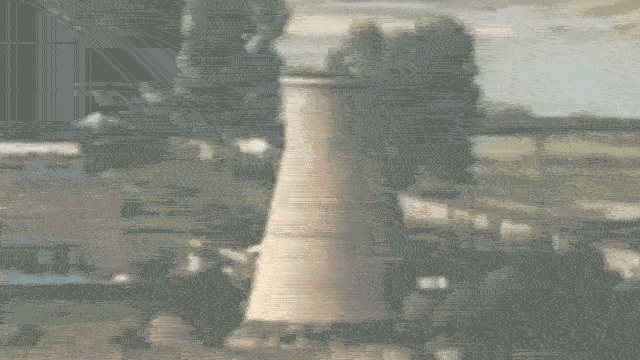After its third nuclear test in February drew a harsh rebuke from the international community and further tightened economic sanctions against the Hermit Kingdom, North Korea has once again doubled down on its nuclear rhetoric. The country announced today that it will soon restart the Yongbyon reactor, Pyongyang’s primary plutonium processing plant.
You know. Where nukes come from.
The Yongbyon reactor initially came online in 1985 as a small 5MWe prototype, but was soon joined by a 50MWe Magnox system modelled after the UK’s reactor at Calder Hall. The Magnox utilizes natural uranium ore and includes a fuel fabrication plant, a short-term storage facility for spent fuel rods, and a reprocessing plant that extracts uranium and plutonium from spent rods.
Construction on the 50MWe reactor was halted in 1994 in accordance with the US-North Korea Agreed Framework, about a year before it was completed. However, when those talks stalled out in 2002, construction resumed and by February 2003, Yongbyon was on pace to produce roughly 6kg of plutonium annually.
To put that in some context: we only need 1.8kg to reach deep space. Which means Yongbyon, at full strength, produced more than enough plutonium to power North Korea’s 2006 and 2009 nuclear tests.
By 2007, the 50MWe reactor was once again shuttered, this time as part of the Six Party talks. North Korea received 50,000 tons of heavy fuel oil in return for sealing the plant and allowing IAEA (International Atomic Energy Agency) inspectors to ensure its complete shutdown. In 2008, North Korean officials went so far as to demolish the reactor’s cooling tower as part of another disarmarment deal.
This, of course, did not last. North Korean officials reopened Yongbyon again in 2009 after the UN condemned its failed rocket launch over the Sea of Japan.
In 2010, North Korea expanded Yongbyon with a light water reactor and 2,000-gas-centrifuge uranium enrichment plant. This enrichment plant, while officially used for civilian power and heat generation, can easily be retrofitted to produce weapon-grade plutonium from the 50MWe reactor’s spent fuel rods, according to US scientist Siegfried Hecker, who toured the facility as part of the IAEA.
In today’s statement the North Korean General Department of Atomic Energy announced its decision “to adjust and alter the uses of the existing nuclear facilities” including “readjusting and restarting all the nuclear facilities in Nyongbyon [Yongbyon] including uranium enrichment plant and 5MW graphite moderated reactor.” This will presumably fortify the country’s nuclear arms “in quality and quantity”.
And that’s not some distant threat, either. According to Hecker, it would only take North Korea six months to get Yongbyon back up and running at full, terrifying strength.
Not everybody is impressed, however. “Despite the harsh rhetoric we’re hearing from Pyongyang, we are not seeing changes to the North Korean military posture, such as large-scale mobilizations and positioning of forces,” White House spokesman Jay Carney said. And however capable the country’s nuclear protocol becomes, its missiles are still years away from being threats to the continental US.
For now, we’ll just have to wait for North Korea to make another move.
